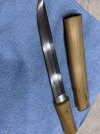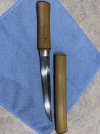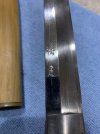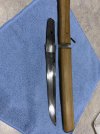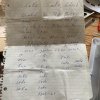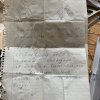There is nothing to suggest this is an older blade, it looks like an oil quenched non traditionally made blade. It was most likely broken at some point and repurposed into this.
Better photos would help, especially one of the blade with everything removed. But is unlikely they would provide any evidence to contradict what has been said by Brian or myself.
I see no evidence of Hada or grain structure. All I see are scratch marks from the sandpaper used to clean it.
The hamon has no hatarake and is obviously oil quenched.
The Nakago (tang) can be repatinated easily to look older. The key here is the sloppy work of reshaping and repatinating the nakago.
This mei of Sukesada, if you want to call it that was added later to enhance the deception. Japanese swords were signed on the nakago (tang).
Occasionally there was some type of prayer or homage inscribed on the blade but very rarely a smiths name.
